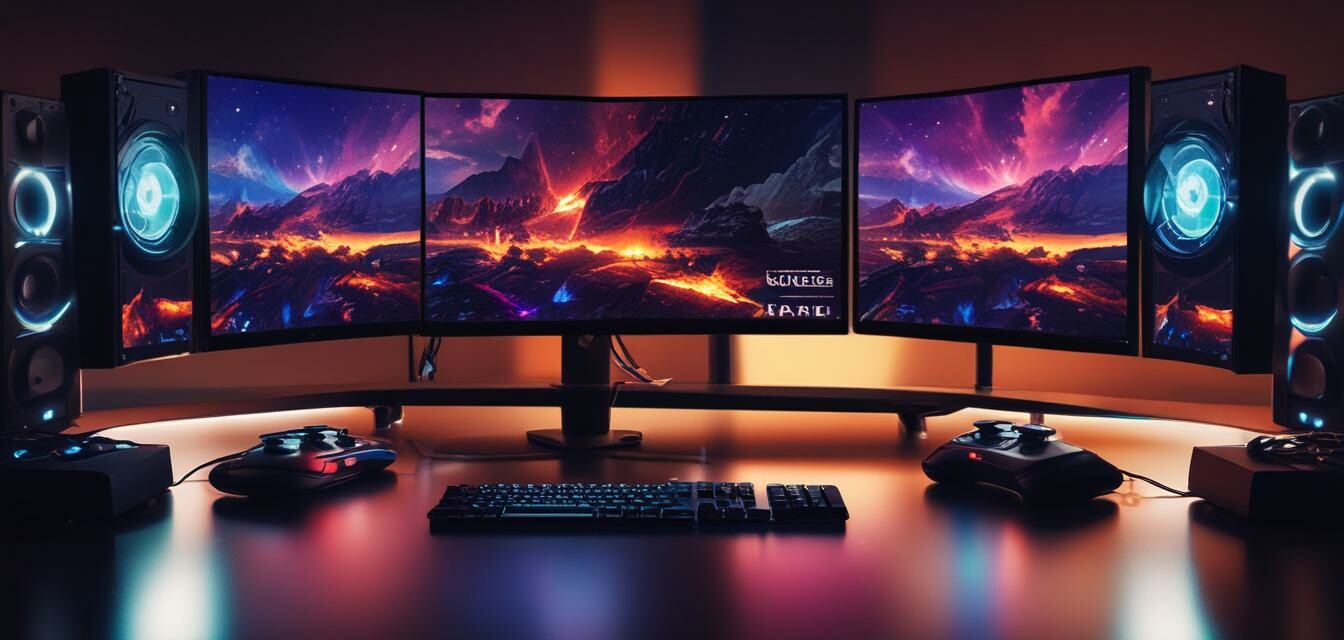
Best Practices for Connecting Multiple OLED Monitors
Key Takeaways
- Choose the right hardware to support multiple monitors.
- Ensure your graphics card can handle the additional load.
- Consider display resolution and refresh rates for seamless gameplay.
- Utilize docking stations or USB adapters for added connections.
- Adjust settings in your operating system for optimal setup.
Setting up multiple OLED gaming monitors can significantly enhance your gaming experience. With the vibrant colors and deep contrasts that OLED technology offers, you can immerse yourself in any game. However, connecting multiple monitors can be challenging if you're not familiar with the requirements and best practices. In this article, we'll discuss essential tips and tricks for a seamless multi-monitor setup.
Hardware Requirements
Before diving into the configuration process, it's vital to ensure your hardware supports multiple monitors effectively. Here are the key components you'll need:
- Graphics Card: Ensure your GPU has enough DisplayPort or HDMI outputs.
- Display Cables: Purchase quality cables that can handle high resolutions and refresh rates.
- Docking Station: Consider using a docking station for additional USB-C or HDMI ports.
- Stand or Mounts: Invest in a sturdy monitor stand or wall mounts to organize your setup efficiently.
Choosing the Right Graphics Card
One of the most critical aspects of connecting multiple OLED monitors is having a capable graphics card. Here are some points to consider when making your choice:
| Graphics Card | Max Monitors Supported | Recommended Usage |
|---|---|---|
| NVIDIA GeForce RTX 30 Series | Up to 4 | High-end gaming, VR |
| AMD Radeon RX 6000 Series | Up to 6 | Gaming, productivity |
| Integrated Graphics | Typically 2 | Casual gaming |
Consider Display Resolution and Refresh Rates
Another critical factor is the resolution and refresh rates of your monitors. For a smooth experience, ensure all monitors are within a similar performance range. Here's a brief overview:
- 4K Resolution: Provides stunning visuals, but requires robust hardware for gaming.
- 1440p Resolution: A good balance between visual fidelity and performance.
- Refresh Rate: Aim for 144Hz or higher for fast-paced games.
Connecting Your Monitors
Once you've chosen your hardware, it’s time to connect your monitors. Follow these steps for an effective connection procedure:
- Power off your computer and monitors.
- Connect the displays to your graphics card using the appropriate cables.
- Power on your monitors and computer.
- Navigate to your operating system’s display settings.
- Arrange monitors according to your preferences.
- Adjust each monitor's resolution and refresh rate as needed.
Optimizing Settings for a Seamless Experience
Proper configuration of your operating system settings is essential for a smooth operation across multiple monitors. Here are some tips to optimize:
- Under Display Settings, ensure each monitor is set as an extended display.
- Adjust scaling settings for better visibility and usability across screens.
- Disable hardware acceleration in applications where screen tearing or lag is noticeable.
- Consider using third-party software to manage your displays more efficiently.
Additional Tips for Multi-Monitor Setup
Helpful Tips
- Use cable management solutions to keep wires organized.
- Test different monitor placements for comfort and performance.
- Update your graphics card drivers regularly for optimal performance.
- Consider color calibration for a uniform look across monitors.
Conclusion
Connecting multiple OLED monitors can elevate your gaming experience, providing a more immersive environment than a single screen. By ensuring your hardware meets the necessary requirements and optimizing your settings, you will set up an impressive gaming station that enhances both visuals and performance.
Pros
- Enhanced immersion with larger display area.
- Increased productivity for multitasking.
- Ability to run multiple applications simultaneously.
- Improved aesthetics of gaming setup.
Cons
- Higher cost of multiple monitors.
- Requires powerful hardware.
- May lead to complications in setup and configuration.
- Possibility of increased power consumption.
For more detailed product comparisons, check out our Product Comparisons section, or explore our Buying Guides for further insights on the best OLED gaming monitors available.